Retro Replay Review
Gameplay
Sync offers a suite of four distinct rhythm and puzzle challenges that fuse precision timing with pattern recognition. In Mantra, the screen presents a series of cryptic symbols in a specific order, and you gently nudge the joystick to align your cursor with each one until the full sequence completes. Points accumulate with every successful match, and the simple feedback loop makes Mantra an ideal introduction to Sync’s mechanics.
(HEY YOU!! We hope you enjoy! We try not to run ads. So basically, this is a very expensive hobby running this site. Please consider joining us for updates, forums, and more. Network w/ us to make some cash or friends while retro gaming, and you can win some free retro games for posting. Okay, carry on 👍)
Jitter builds on the foundations laid in Mantra but adds a twist: once you match a symbol, control automatically jumps to the next spot in the sequence. This subtle change transforms the experience from a measured, deliberate matching game into an engaging test of reflexes and adaptability. You’ll find your mind racing to anticipate the next control shift, sharpening both your muscle memory and pattern-spotting skills in the process.
Flow shifts the action into a more cerebral arena. Instead of joystick matching, you place bars around CPU-controlled cells. When a timer reaches its threshold, any cell whose bar count matches the sum of your adjacent placements disappears, and points are awarded. The result is a satisfying interplay of spatial reasoning and timing—each decision has ripple effects across the grid, so it’s easy to feel the thrill of orchestrating a multi-cell clear in one well-timed move.
Finally, Four serves as a grab bag of mini-games that cross-pollinate the core modes. Gate asks you to match vertically scrolling symbols dropped by the CPU, demanding faster responses; Here requires clearing cells when directional arrows line up; and Jitter 1K and Flow 1K offer compact, bite-sized spins on their larger counterparts. With scores and speed modifiers tuned for quick bursts of play, Four is the perfect way to warm up or squeeze in a short challenge between longer sessions.
Graphics
Sync’s visual presentation is clean and functional, favoring clarity over ornate flourishes. Each mode boasts its own color palette—Mantra’s cool blues and purples, Jitter’s electric neons, Flow’s earthy tones, and Four’s bright, contrasting hues—making it easy to distinguish gameplay at a glance. Iconography is thoughtfully designed so that even at high speeds, symbols remain readable and distinct.
Animations are sharp and purposeful. When you successfully match a sequence in Mantra or Jitter, the symbols elegantly fade out or burst with a subtle particle effect, reinforcing your progress without distracting from the next incoming prompt. Flow’s bar placements slide smoothly into place, and the subsequent cell removals are accompanied by a gentle pulsing effect that punctuates your strategic victories.
Overall, the minimalist UI elements—adaptive score displays, clean timer rings, and unobtrusive life meters—ensure that nothing gets in the way of the core puzzle action. Visual feedback is immediate and intuitive, allowing you to stay fully immersed in Sync’s rhythmic challenges without battling cluttered screens or confusing overlays.
Story
Sync does not follow a traditional narrative arc or feature defined characters—instead, it adopts an abstract theme of harmony, precision, and the pursuit of perfect timing. Each mode feels like a meditation on synchronization, inviting you to find flow states through repeated patterns and rhythmic engagement. In that sense, the “story” is really the internal journey of mastering each sequence, bar placement, and symbol match.
As you progress through increasingly complex levels, it almost feels as though you’re unlocking deeper layers of a hidden musical code. The absence of a literal plot lets your own concentration and skill development become the driving force, making every new high score or cleared grid feel like a personal milestone in your own storyline. In this way, Sync’s narrative is experiential rather than expository.
Subtle audio cues and ambient background tracks hint at an evolving environment, even if the visuals remain abstract. Progressing through modes imparts a sense of traveling through different realms of rhythm and logic—like moving from a serene temple of symbols in Mantra to the buzzing digital gridscapes of Jitter and Flow. The result is a cohesive thematic undercurrent that holds the collection together without relying on character-driven storytelling.
Overall Experience
Sync excels at delivering quick, engaging bursts of challenge that are easy to pick up yet increasingly demanding to master. The four core modes and their mini-game offshoots provide enough variety to keep sessions fresh, and the gradual ramp-up in complexity means there’s always a new pattern or puzzle twist to conquer. Whether you have five minutes or an hour, Sync adapts to your schedule.
It’s worth noting that the abstract nature of the gameplay may not appeal to players seeking a deep narrative or richly detailed world. Similarly, those who aren’t fans of repetitive, score-chasing loops might find the single-screen puzzles a bit clinical. However, if you thrive on iteration, improvement, and the satisfying click-click of matched sequences, Sync delivers in spades.
In the end, Sync stands out as a polished, accessible collection that merges rhythm and puzzle genres with impressive synergy. Its minimalist presentation, tight controls, and escalating challenges make it well suited for fans of both quick reaction tests and thoughtful spatial puzzles. For anyone looking to hone their reflexes, sharpen their pattern recognition, or simply lose themselves in a hypnotic cycle of beats and grids, Sync is a compelling pick.
 Retro Replay Retro Replay gaming reviews, news, emulation, geek stuff and more!
Retro Replay Retro Replay gaming reviews, news, emulation, geek stuff and more!
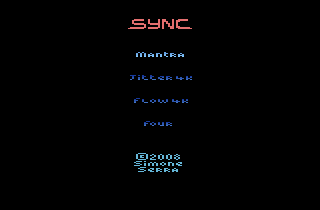
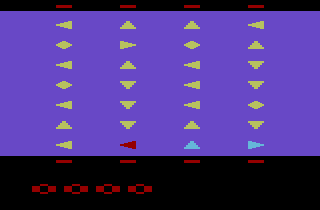
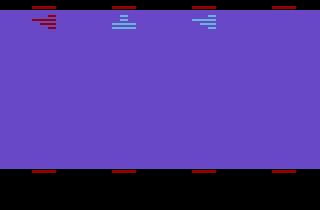
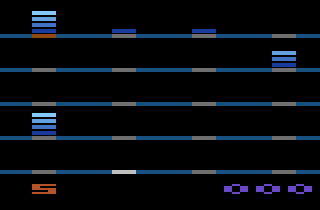
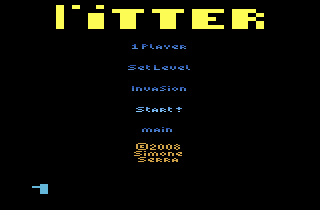




Reviews
There are no reviews yet.